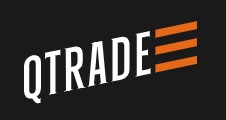The Canadian government’s new First Home Savings Account (FHSA) came into effect on April 1, 2023. This new registered savings account allows prospective first-time home buyers to save for a down payment on a tax-free basis. FHSA contributions are tax-deductible (like an RRSP), and qualifying withdrawals to purchase a first home are non-taxable (like a TFSA).
The FHSA allows account holders to contribute up to $8,000 annually to a lifetime maximum of $40,000.
Eligibility requirements
You can open an FHSA if you are:
▪ a Canadian resident
▪ at least 18 years old (or the minimum legal age in your province)
▪ a first-time homebuyer*
*You are considered a first-time homebuyer if you or your spouse/common-law partner did not own the home that you lived in in the year you open an FHSA or the preceding four calendar years.
FHSA contribution limits
You are allowed to contribute up to $40,000 over your lifetime to an FHSA and up to $8,000 in any calendar year.
Like with an RRSP, your annual FHSA contributions can be claimed as an income tax deduction for contributions made in that year. However, unlike an RRSP, your FHSA contributions made during the first 60 days of the calendar year cannot be used for tax deductions for the previous year. Unused contribution room can carry forward to the following year up to a maximum of $8,000.
As with other registered plans, you can have more than one FHSA, but the total combined amount you can contribute to all your accounts cannot exceed your annual and lifetime FHSA contribution limits.
Like TFSAs and RRSPs, a tax on overcontributions to an FHSA would apply for each month that the account is over the limit. The tax applies at the rate of 1% of the highest amount of the excess that existed in that month.
FHSA withdrawal rules
If you use your FHSA savings to buy a home, a withdrawal from your FHSA will not be taxable. To qualify, your withdrawal must meet the following conditions:
- You must be a first-time homebuyer;
- You must be a Canadian resident;
- You must have a written agreement to buy or build a qualifying home (located in Canada) before October 1 of the year following the year of withdrawal; and
- Your new home must be your principal place of residence within one year of buying/building it.
Once you’ve made a non-taxable withdrawal from your FHSA to purchase a home, you must close your FHSA within a year from that date, and would not be eligible to open another FHSA.
If you take funds from your FHSA as a non-qualifying withdrawal, you must include the amount in income for the year of the withdrawal and tax will be withheld (much like a withdrawal from your RRSP).
Other withdrawal options
You must use the funds in your FHSA to purchase a first home within 15 years of opening the plan, or by the end of the year you turn 71.
If you don't use your FHSA to buy a home, you can transfer the funds to an RRSP or RRIF account. The transfer would not impact your RRSP’s available contribution room.
You can also simply withdraw the funds from your FHSA, but the amount would be subject to withholding tax and be included as income on your tax return.
FHSA vs Home Buyers’ Plan
Currently, the Home Buyers’ Plan (HBP) allows first-time homebuyers to withdraw up to $35,000 tax-free from their RRSP to purchase or build a new home. However, you must pay that money back to your RRSP within 15 years. In an FHSA, you are not required to pay back the funds withdrawn toward the purchase of a qualifying home.
As a first-time homebuyer, you can use both FHSA withdrawals and HBP withdrawals toward a qualifying home purchase.
Mutual funds are offered through Credential Asset Management Inc. Mutual funds and other securities are offered through Credential Qtrade Securities Inc. Credential Asset Management Inc. and Credential Qtrade Securities Inc. are wholly owned subsidiaries of Aviso Wealth Inc.







